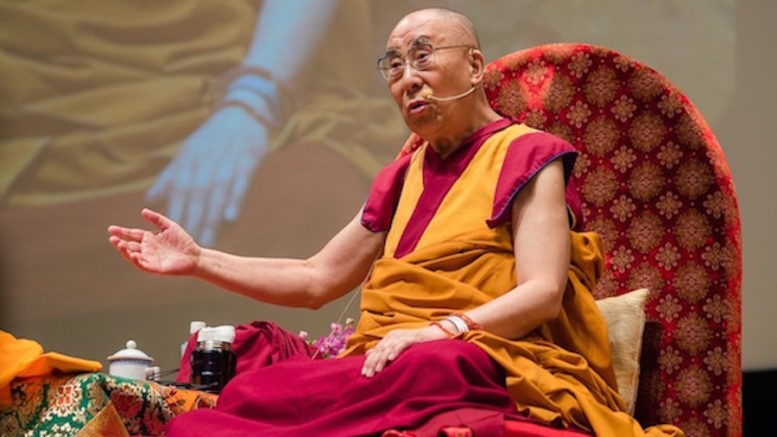OSAKA, Japan: His Holiness the Dalai Lama today began the first of the four-day teachings on Shantideva’s A Guide to the Bodhisatva’s Way of Life (Tib: Chodjug) at the Osaka International Convention Center. The text of the teaching consists of ten chapters dedicated to the development of Bodhicitta (the mind of enlightenment) through the practice of the six perfections. Shantideva was an 8th century Indian Buddhist scholar on the Madhyamaka (Middle Way) philosophy of Nagarjuna.
At least 2700 devotees attended the teaching, which was conducted primarily in Tibetan with simultaneous translations in Japanese, Chinese, Korean, Mongolian, Russian and English languages.
Before commencing the actual teaching, His Holiness the Dalai Lama greeted the audience, applauding their keen desire to learn Buddhist teachings. His Holiness explained that it is more important to study and analyse the texts rather than praying and according sanctity without understanding the essence of these texts. “The Buddha himself has encouraged his disciples to investigate his teachings rather than accepting it out of blind faith. So we should do that,” His Holiness said.
His Holiness also spoke about global responsibility and the sense of oneness that we should cultivate to transform the 21st century into a century of dialogue and peace.
“The last century was spent on wars and bloodshed. However, we should make effort to transform this century into a century of dialogue,” His Holiness said, expressing optimism that younger generations are on the right path towards change.
“I met several young people including Africans and Arabs from Muslim countries recently at Dharamshala as part of an event organised by USIP. These people have faced so much misery due to destruction caused by war in their respective countries. And yet, they have risen up and organised themselves to help others in their villages. This is really encouraging,” His Holiness said.

His Holiness the Dalai Lama further spoke about his three main commitments in life, namely universal responsibility through promotion of human values; promotion of religious harmony; and the preservation of Tibet’s rich cultural heritage.
Speaking about universal responsibility, His Holiness the Dalai Lama said he considers himself as one among the seven billion human beings. “All human beings are the same. Irrespective of whether we are believers or non-believers, we all want happiness and do not want suffering. Moreover, all humans have experienced mother’s love. Therefore, basic human nature is compassionate and we should utilise this compassion to foster genuine trust and friendship among ourselves for a better and healthier life,” His Holiness said.
“If you differentiate others on the basis of nationality, identity or status, you are secluding yourself from the rest and you will be all alone. It is a time of interdependence. So we should reach out to others more,” His Holiness added.
Explaining his second commitment, His Holiness said that all major religious traditions of the world emphasise love, compassion and affection, despite some philosophical differences such as the notion of a creator deity which is not prevalent in Buddhism.
“Yet, all major world religions have the same potential to create good human beings,” His Holiness said, expressing sadness at the same time, of recent incidents where some Buddhist monks have been involved in violence against others.
His Holiness said his final commitment is to work for the preservation of Tibet’s rich cultural and religious heritage including the Tibetan language. “It is imperative to study and preserve the Tibetan language because the purest lineage of the Nalanda tradition have been preserved in the Tibetan language only. So, Tibetan language is of extreme importance to not just the Tibetans but also to the world,” His Holiness said.
His Holiness then started the formal teachings of the text, completing three chapters before concluding for the day. His Holiness advised that his explanation will extend over the next four days and that it should be regarded as an opportunity to study and learn, not just to receive blessings out of blind faith.
During the teaching, His Holiness the Dalai Lama shared personal anecdotes and narrated stories. He said he first received the explanation of the teaching from Khunnu Lama Rinpoche in 1967. “Since then, the teachings have been quite effective for me personally in practicing patience, maintaining calm and refraining from anger,” His Holiness said, urging the audience to reflect and practice the teachings a little everyday to transform our negative emotions. His Holiness also touched on concepts such as the phenomenon of self, emptiness, Madhyamaka, among others during the teaching.
His Holiness will resume the teachings tomorrow from 10:00 am.



